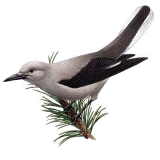Papers in the Biological Sciences
Date of this Version
1998
Abstract
The corvids of the southwest possess many adaptations for the harvest, transport, caching and recovery of pine seeds. However, there is a large degree of between-species variation in the distribution of these traits. These corvids have a well-accepted phylogeny (Hope, 1989), live within close proximity to one another and have relatively well-known natural histories. They therefore present an excellent opportunity to apply the comparative method (Kamil, 1988) to the study of these species differences (Balda et al., 1997). The comparative method for the study of adaptation and evolution of behavioral traits begins with a careful study of the natural histories of the study species which should reveal how a particular trait (or suite of traits) is utilized, and provide some information about the selective pressure and potential fitness which differentially influence the trait in the different species. Species differences (and similarities) in the use of the trait can be attributed to the ecology and/or phylogeny of the species. Two processes are particularly powerful in these types of investigations, convergence and divergence. Convergence leads to similarities among distantly related species owing to the influence of similar ecological constraints. Divergence leads to differences among closely related species that correlate with the influence of different ecological constraints. The strongest support for the evolution of a trait or set of traits is found when one can find patterns of convergence between distantly related groups and divergence between similar groups for a single suite of traits. Here, we examine the natural history of the various southwestern corvids with particular attention paid to the traits involved in seed harvest, caching and cache recovery.


Comments
Published (as Chapter 2) in Animal Cognition in Nature: The Convergence of Psychology and Biology in Laboratory and Field, edited by Russell P. Balda, Irene M. Pepperberg, and Alan C. Kamil, San Diego (Academic Press, 1998), pp. 29–64. Copyright © 1998 by Academic Press. Used by permission.